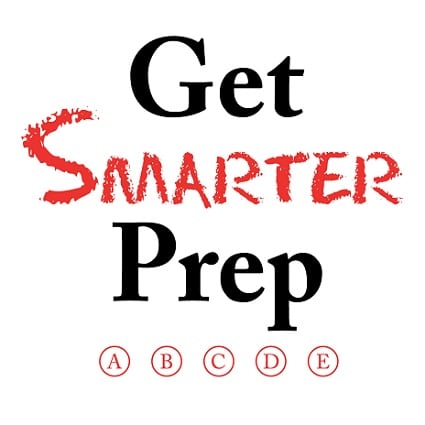You Received Your PSAT Scores. Now What?
The PSAT occupies a strange in-between place in the world of standardized testing. In terms of admissions, the PSAT doesn’t “count.” Colleges will only ask for your ACT or SAT scores. For most students (where most equals 97%) the PSAT doesn’t do much anything at all. It’s just practice.
It can help you decide whether you want to take a real SAT, or whether the ACT might be a better fit for you. If you think you will do better on the SAT, consider taking a full-length practice SAT (along with your practice ACT) to be sure. There are some timing differences between the PSAT and the SAT that might affect your performance. If you’ve already decided to focus on the ACT, think carefully about whether you want to change gears now.
However, unlike the PLAN or ACT Aspire, the approximate equivalents of the PSAT in the ACT-universe, for some students, the PSAT can matter. And because of that some (where some equals about 50,000 nationwide), the PSAT is kind of like Schrodinger’s standardized test. It might count. It might not.
Before scores were released, you probably had some idea where your score might fall; now you know. The cat is out of the box. You can properly contextualize your PSAT experience, progress beyond this uncertain, liminal space, and move on with your life.
Or, maybe not.
Based on estimates of this year’s cutoffs (emphasis on estimates), the answer to “does this score matter much?” is either “no” or “possibly.”
If, based on the estimates, your score is significantly below the projected cutoff in your state, (this is true for the most students, even those who study and work hard and are bright and who will have excellent college options down the road) then the PSAT was practice. It gave you a bit of information about how you might do on an SAT.
If you think you might end up a Semifinalist, you should prepare for and take an SAT. You’re likely to do well on the SAT, especially with some additional practice, and having an SAT score that validates your PSAT is one of the requirements of advancing to Finalist status. However, be aware that you won’t know whether you’re a Semifinalist until September. Counting on it probably isn’t helpful, and driving yourself mad speculating likely won’t help either. National Merit is only one source of scholarships; if your test scores are in this range, it’s likely not your only option. Keep researching, and studying, and doing what you’ve been doing all along.
If your PSAT scores are better than you hoped, congratulations! If they are lower than expected, take heart: there’s time yet to prepare for the “real” test, whichever one you choose.
By Audrey Hazzard, Premier-Level Tutor
PSAT Results
PSAT results are finally released, about a month after they were initially expected. While some students are still having difficulty accessing their scores, those who have been able to get in have been confronted with scores that look quite different from previous PSATs.
Total PSAT scores are between 320 and 1520. The total score is a combination of the Math and “Evidence-Based Reading and Writing,” each of which is scored between 160 and 760. While these score ranges are not the same as the SAT – the upper and lower limits are shifted down by 40 points – College Board maintains that they are basically predictive of a student’s performance on the SAT.
The Selection Index will appear lower this year due to the new scoring ranges. For the class of 2016 (the last class to take the “old” PSAT), the highest possible score was a 240, and state-by-state NMSQT/PSAT cutoffs for semifinalists varied from 202 to 225. This year’s maximum Selection Index is a 228. Estimates of this year’s cutoffs vary considerably, and it might be easy to obsess over all of the possibilities if you believe your score is in the range for National Merit consideration.
Percentiles have also become more complicated on this year’s reports. Online score reports will include both percentiles – a “Nationally Representative Sample Percentile” and the “User Percentile.” The Nationally Representative sample will generally be higher, and provides the score as a percentile of a “nationally representative” group of 11th grade students. This measurement demonstrates how a student’s score compares to all high school juniors in the United States, including students who “don’t typically take the test.” The Nationally Representative Sample Percentile is the one that will appear on a students’ hard-copy report. The User Percentile is the percentile rank we’re more familiar with, comparing the scores of students who actually took the test. The User Percentile is only available online.
With so much uncertainty remaining, what useful information can we gain from the PSAT? If you’re still debating which test to focus on – the ACT or SAT – your PSAT results/score can help you decide. If you do decide to move forward with the SAT, a more thorough review of your PSAT can help. When your hard copy score report is released, take the time to review your test booklet for additional insights and make a study plan for the SAT.
Springtime for Sophomores
Seniors have heard back from their schools and are finalizing their college choice in preparation for the May 1 deadline. Juniors are taking the ACT or SAT, SAT subject tests, and AP exams. Those two grades have clearly defined paths to college, but what about Sophomores? While spring of sophomore year seems far away from applying to college, there are three things you can do to strengthen your future college applications.
1. Take an ACT and SAT practice test and determine which test is a better test for you.
We recommend that the students take both an ACT and an SAT practice test near the end or just after their sophomore year. That way, you go into fall of junior year with a plan. Are you in range to be a National Merit scholar? If so, you can sign up for one of our summer classes in preparation for the PSAT. Do you play a winter sport and a spring sport? Another great reason to prepare in the summer and take one of the fall tests! Every student is different. Taking a practice test at the beginning of the summer ensures your student has time to decide which test and test date is best!
2. Finish the year with your highest possible grades.
Yes, this seems like an obvious one, but it really is important! If you have a bad test day, you can retake your SAT or ACT or driver’s license test, but once sophomore year is over, you are locked into those grades. Grades are a key piece of college admissions puzzle, so it is crucial to do your best.
3. Take advantage of the summer.
While it is tempting to spend the summer relaxing before the stress of junior year, you post-sophomore year summer is a great time to get a jump start on college. You are interested in botany but your high school doesn’t offer it? Take a course at a local college or community college. Not only will it look great on your resume, but it will be really interesting! Want to start saving money for college? Get a job! Jobs look great on your resume and give you a great opportunity to make business connections. An anecdotal example: my grandfather worked as a delivery runner for a law firm one summer; after graduating law school, he was hired by that same law firm! Too busy to have the set schedule of a job or class? You can always volunteer, write a paper to submit to your favorite magazine, research colleges, or take test prep!
Most sophomores have no idea where they might want to attend college, and that is perfectly okay! Following these three steps will ensure that when they do choose where to apply, they will have the highest amount of possibilities.



